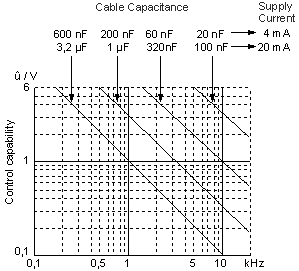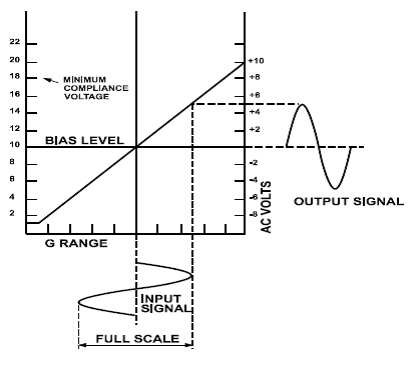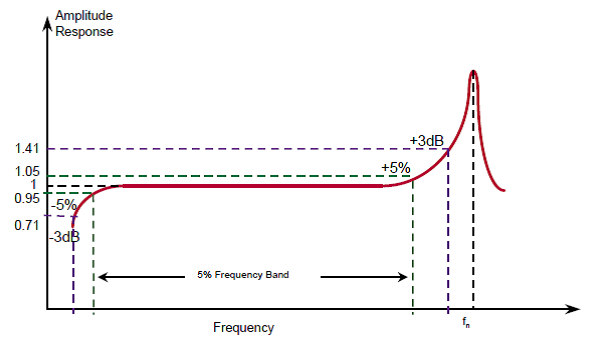Output signals of IEPE sensors
Vibrations can be recorded with IEPE (Integrated Electronics Piezo Electric) sensors, for example. The advantage of this technology is an integrated amplifier as impedance transformer, so that only a simple two-wire connection (coax) is required for the low-impedance output signal. IEPE sensors are typically supplied with 2…20 mA constant current. In inactive state they produce a constant DC bias voltage (zero voltage/Ubias) typically 7…14 V. Depending on the acceleration of the sensor, an analog AC voltage generated proportionally to the movement is added to the sensor's Ubias ; e.g. a 50 Hz sinusoidal deflection with an amplitude of 1 g (= 9.81 m/s2) produces a 50 Hz sinusoidal output voltage of AC +/-50 mV + Ubias in the case of a sensor with a sensitivity of 50 mV/g (Fig. Output signal of an IEPE sensor (sample)). The maximum output signal of a sensor is usually AC +/-5 V (+ Ubias).
Increasing cable length results in increasing cable capacitance (typically 100 pF/m), so that the control capability of the integrated amplifier drops with increasing signal frequency. This can be partly compensated by increasing the supply current (Fig. Control capability of the IEPE impedance transformer depending on cable capacitance and supply current).

The basic properties of IEPE acceleration sensors are described by various parameters such as sensitivity (e.g. 50 mV/g), measuring range (e.g. +/-100 g), +/-3 dB frequency range (under 1 Hz to several kHz), current consumption (2…20 mA), bias voltage etc. The figure Frequency response of an acceleration sensor shows an example of a frequency response (amplitude of the output signal in relation to the frequency).


Other proprietary names for this electrical technique include DeltaTron®, Isotron™, ICP™, Piezotron™ or CCLD
Note: At their core IEPE sensors usually have quartz crystals, which experience small charge changes due to the motion. Measuring and transporting these over several meters requires complex cable installations and measuring instruments for charge amplification. For cost-effective and robust application in industrial environments the solution is to integrate a simple charge amplifier as impedance transformer in the sensor. This enables it to generate the above-mentioned voltage signal and transport the vibration information over larger distance (several tens of meters).